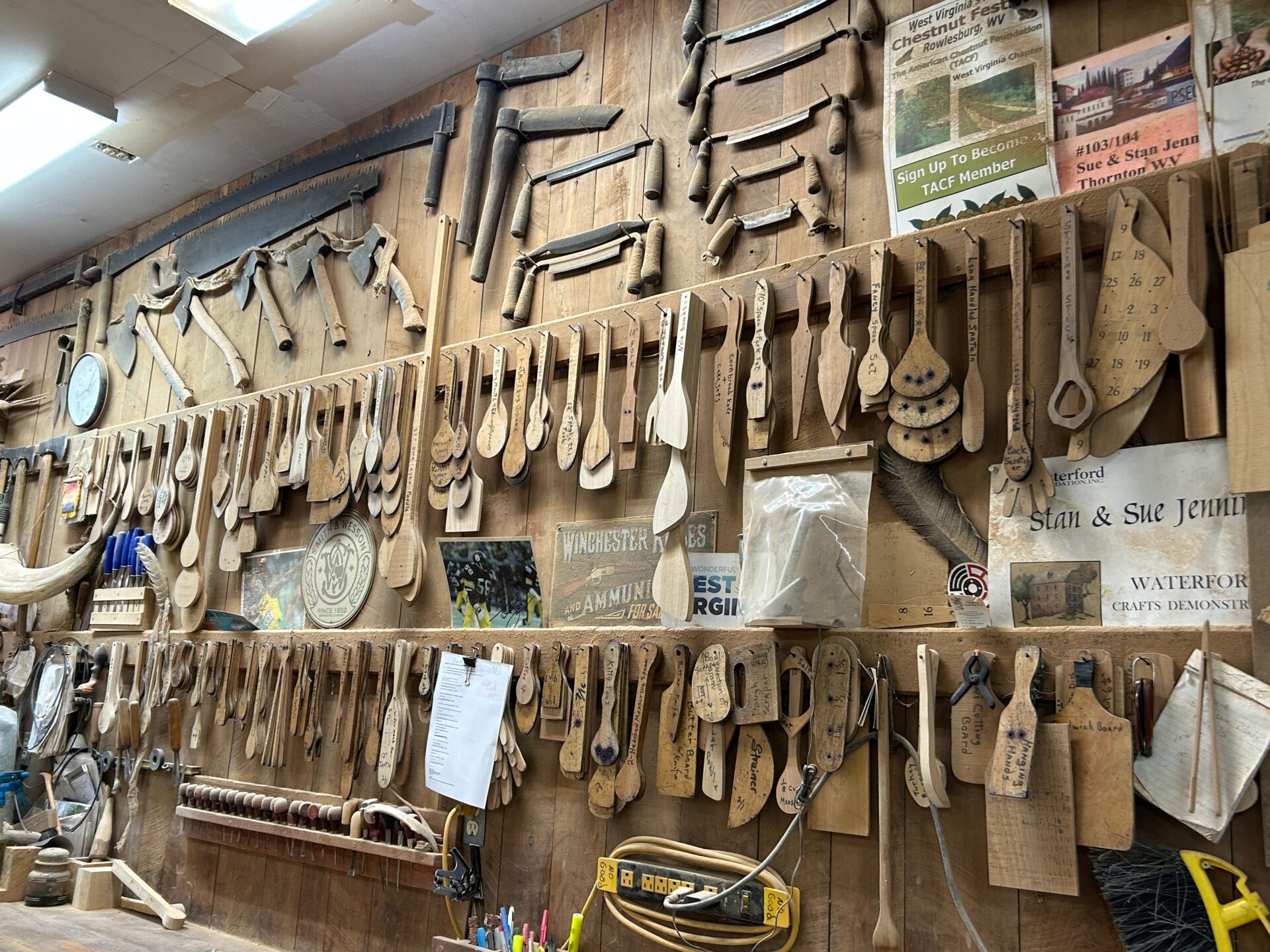This week, a pair of former miners found love shoveling coal and shaped a life making wooden spoons. We learn about treenware.
Also, NASCAR Hall of Famer Leonard Wood shares stories, and a bit of advice.
And, group bike rides are a way to socialize and get outside. But here in Appalachia, newcomers are met with steep hills.
In This Episode:
- Two For Treenware
- Hanging Out With NASCAR Legend Leonard Wood
- Exploring Morgantown On The Back Of A Bicycle
- Sovereignty At The Museum Of The Cherokee People
Two For Treenware
Photo Credit: Zack Gray/Allegheny Treenware
For 30 years, Sue and Stan Jennings have run Allegheny Treenware, a West Virginia company that makes wooden kitchen utensils. But they started off as a couple of coal miners. And when they weren’t underground, they talked about what else they could be doing.
Folkways Reporter Capri Cafaro visited the Jennings.
Hanging Out With NASCAR Legend Leonard Wood
Photo Credit: Mason Adams/West Virginia Public Broadcasting
Stock car racing’s roots run deep in Appalachia. Some of NASCAR’s early stars came straight from the lawless moonshine runners of the 1920s and 1930s, but NASCAR’s oldest continuous racing team had nothing to do with moonshine.
Mason Adams visited with Leonard Wood at The Wood Brothers Racing Museum in Virginia for stories and wisdom.
Exploring Morgantown On The Back Of A Bicycle
Photo Credit: Chris Schulz/West Virginia Public Broadcasting
With spring, lots of folks are heading out to the woods or the rivers, but one group in Morgantown, West Virginia is taking to the streets – on their bicycles.
WVPB’s Chris Schulz grabbed his helmet and tagged along to explore his city in a new way.
Sovereignty At The Museum Of The Cherokee People
Photo Credit: BPR
In western North Carolina, a new exhibit called “Sovereignty” recently opened at the Museum of the Cherokee People. The exhibit focuses on the autonomy of the Eastern Band of Cherokee Indians. Director of Education Dakota Brown is co-curator of the exhibit.
BPR Senior Regional Reporter Lilly Knoepp spoke with Brown as part of a panel at the Appalachian Studies Association conference in March and sent us an excerpt.
——
Our theme music is by Matt Jackfert. Other music this week was provided by The Dirty River Boys, Charlie McCoy, John Blissard, Sierra Ferrell, and John Inghram.
Bill Lynch is our producer. Zander Aloi is our associate producer. Our executive producer is Eric Douglas. Kelley Libby is our editor. Our audio mixer is Patrick Stephens. We had help this week from folkways editors Nicole Musgrave and Mallory Noe Payne.
You can send us an email: InsideAppalachia@wvpublic.org.
You can find us on Instagram, Threads and Twitter @InAppalachia. Or here on Facebook.
Sign-up for the Inside Appalachia Newsletter!
Inside Appalachia is a production of West Virginia Public Broadcasting.
